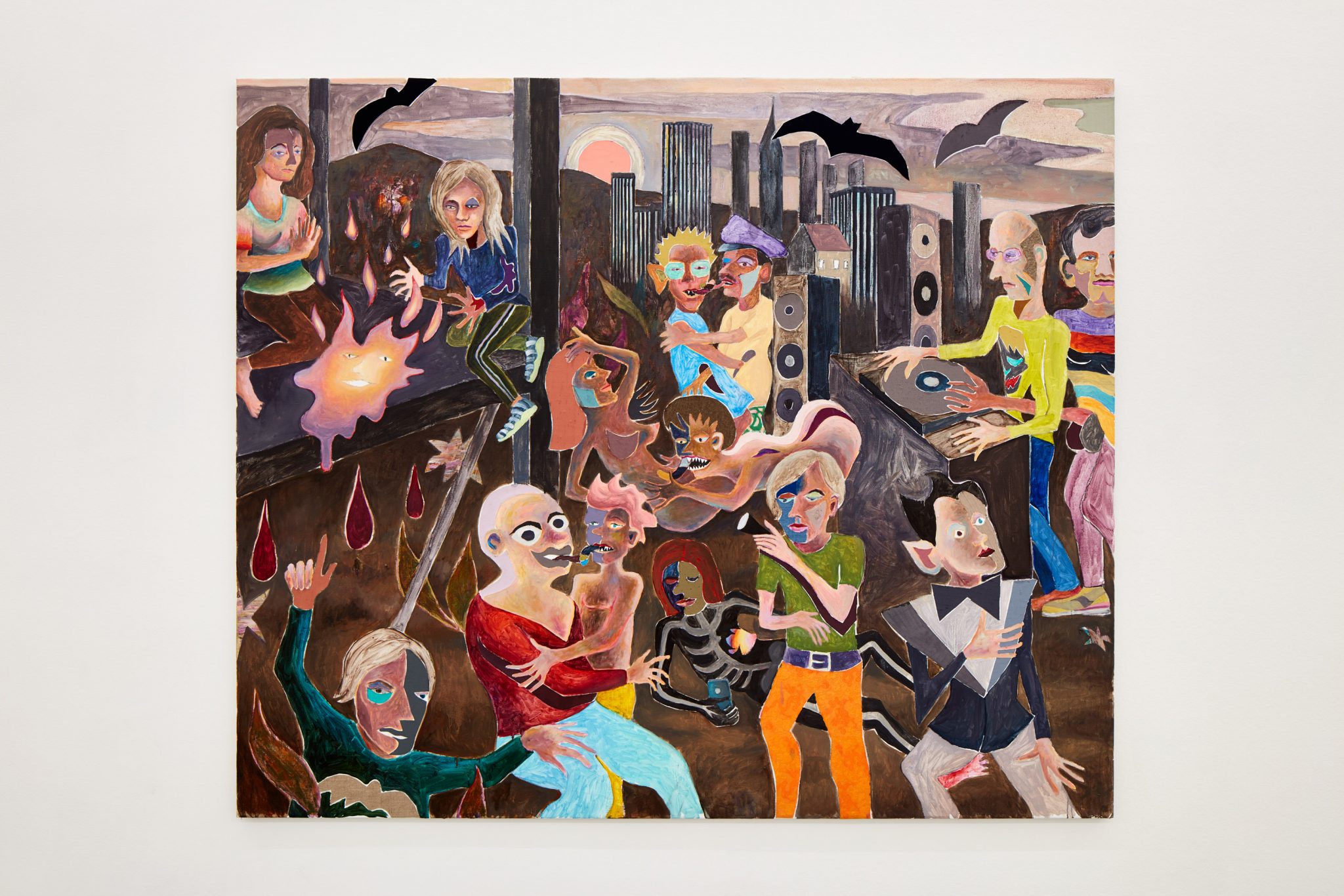15/03 - 04/05, 2011
-
Armin Boehm
CHIFFON ROUGE
The fine line between existence and non-existence as well as the investigation of scientific and social borderline areas form points of departure for Armin Boehm’s paintings. His visual concepts often refer to avant-garde literary movements from the early 20th century, he revives the question of the definition and contextualisation of mankind and human thought found therein, and brings it up to date using the means of painting. In his compositional practise the artist creates sceneries in which the materiality of the depicted motifs evolves in the layering of shape, colour and collaged elements – here Boehm revokes, dissolves or prescinds the figurative character of an image immediately during the process of painting it. Existence and disappearance take effect in the texture of the surfaces, as well as the pictorial space of Armin Boehm’s paintings. So, Boehm makes the question of the possibilities within a picture the subject of his painting.
In his new exhibition “Chiffon Rouge” Armin Boehm continues the idea of a void surrounding the culturalised human, which had already been a theme in his previous exhibition, now he has enhanced this idea with a concept of nihilistic character.
The title of the show is derived from the 1939 novel “On the Marble Cliffs” by Ernst Jünger, which describes an upheaval in a fictive society. As it were, Jünger’s book describes the downfall of an intellectually and technically highly developed society, and it is the discontinuity in a modern, ramified way of thinking and the vulnerability inherent to this which Boehm expresses alternately via figuration and symbolism in his painting. His sometimes graphical, yet abstracted visual language focuses on specific events, it is reminiscent of the vocabulary of modernism but simultaneously causes its subjects to seem timeless in their alienation and indeterminateness.
Armin Boehm describes space and human behaviour as a hybrid texture, and so contemplation occurs from different perspectives in the various unfolding spatial planes of his imagery, unifying introspection and a bird’s eye view of a scene. Much like the translucence of chiffon, Armin Boehm’s paintings simultaneously reveal and conceal the subject they handle. Their motifs include the retreat into privacy, but they expose the private by placing it on display. Boehm’s visual shapes of inner emigration are time and again contrasted by the manner of their expression, by becoming increasingly sculptural and protruding from the retreat of the image surface. Using the technique of collage, Boehm conjoins fragments of paint, cloth, paper or metal substances from which his subjects emerge, almost sculpturally materialising in concrete space. Armin Boehm’s visual articulation oscillates between emergence, presence and absence, much like the subjects of his paintings, which defy concrete tangibility.
Christina Irrgang
translation by Zoe Miller
The fine line between existence and non-existence as well as the investigation of scientific and social borderline areas form points of departure for Armin Boehm’s paintings. His visual concepts often refer to avant-garde literary movements from the early 20th century, he revives the question of the definition and contextualisation of mankind and human thought found therein, and brings it up to date using the means of painting. In his compositional practise the artist creates sceneries in which the materiality of the depicted motifs evolves in the layering of shape, colour and collaged elements – here Boehm revokes, dissolves or prescinds the figurative character of an image immediately during the process of painting it. Existence and disappearance take effect in the texture of the surfaces, as well as the pictorial space of Armin Boehm’s paintings. So, Boehm makes the question of the possibilities within a picture the subject of his painting.
In his new exhibition “Chiffon Rouge” Armin Boehm continues the idea of a void surrounding the culturalised human, which had already been a theme in his previous exhibition, now he has enhanced this idea with a concept of nihilistic character.
The title of the show is derived from the 1939 novel “On the Marble Cliffs” by Ernst Jünger, which describes an upheaval in a fictive society. As it were, Jünger’s book describes the downfall of an intellectually and technically highly developed society, and it is the discontinuity in a modern, ramified way of thinking and the vulnerability inherent to this which Boehm expresses alternately via figuration and symbolism in his painting. His sometimes graphical, yet abstracted visual language focuses on specific events, it is reminiscent of the vocabulary of modernism but simultaneously causes its subjects to seem timeless in their alienation and indeterminateness.
Armin Boehm describes space and human behaviour as a hybrid texture, and so contemplation occurs from different perspectives in the various unfolding spatial planes of his imagery, unifying introspection and a bird’s eye view of a scene. Much like the translucence of chiffon, Armin Boehm’s paintings simultaneously reveal and conceal the subject they handle. Their motifs include the retreat into privacy, but they expose the private by placing it on display. Boehm’s visual shapes of inner emigration are time and again contrasted by the manner of their expression, by becoming increasingly sculptural and protruding from the retreat of the image surface. Using the technique of collage, Boehm conjoins fragments of paint, cloth, paper or metal substances from which his subjects emerge, almost sculpturally materialising in concrete space. Armin Boehm’s visual articulation oscillates between emergence, presence and absence, much like the subjects of his paintings, which defy concrete tangibility.
Christina Irrgang
translation by Zoe Miller
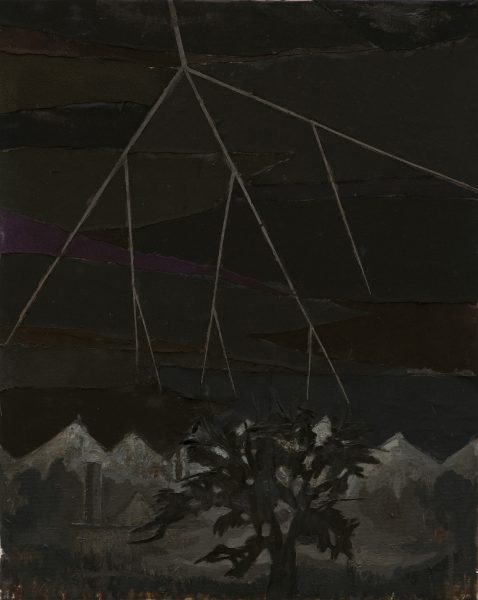 HE, 2011Oil, paper, fabric on canvas
HE, 2011Oil, paper, fabric on canvas
40×50 cm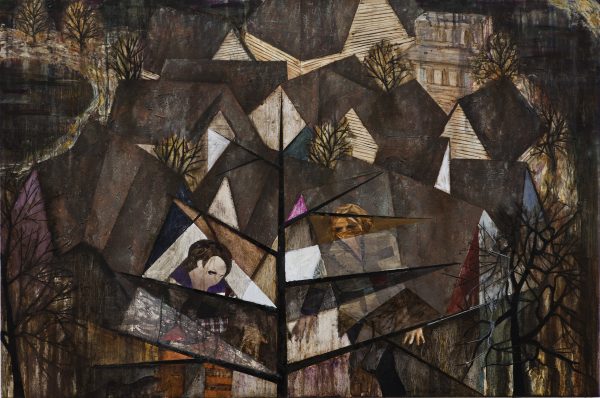 Racine, 2011Oil, paper, metal dust on board
Racine, 2011Oil, paper, metal dust on board
84×126×5 cm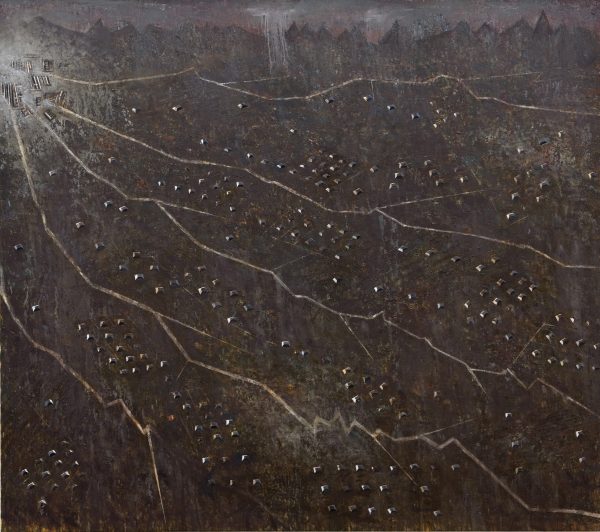 La Peste, 2010Oil, metal, pigment on canvas
La Peste, 2010Oil, metal, pigment on canvas
230×260 cm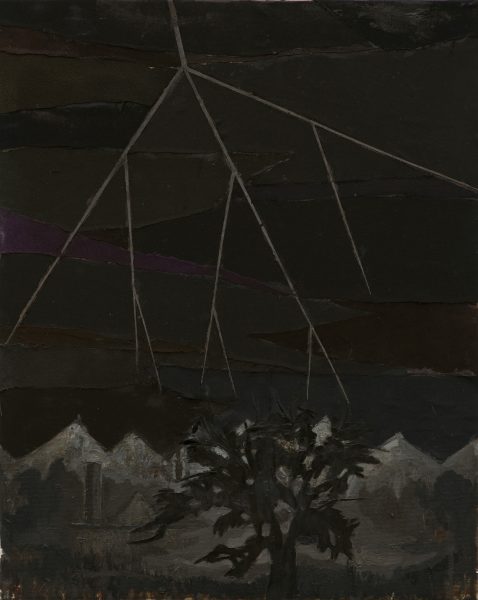 HE, 2011Oil, paper, fabric on canvas
HE, 2011Oil, paper, fabric on canvas
40×50 cm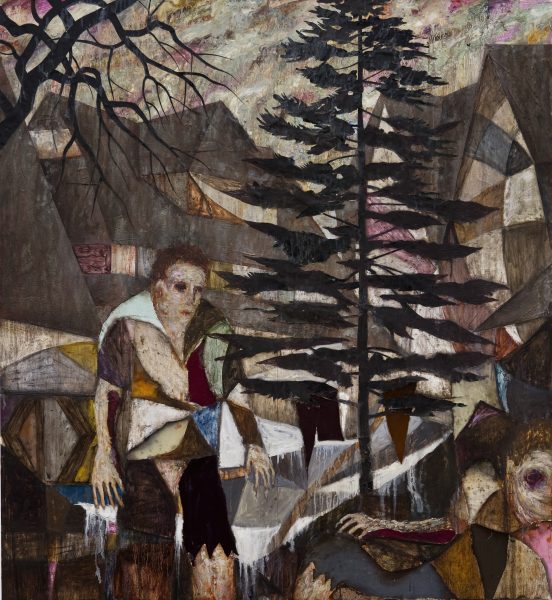 Xisai, 2011Oil, paper, fabric, metal dust on board
Xisai, 2011Oil, paper, fabric, metal dust on board
120×110 cm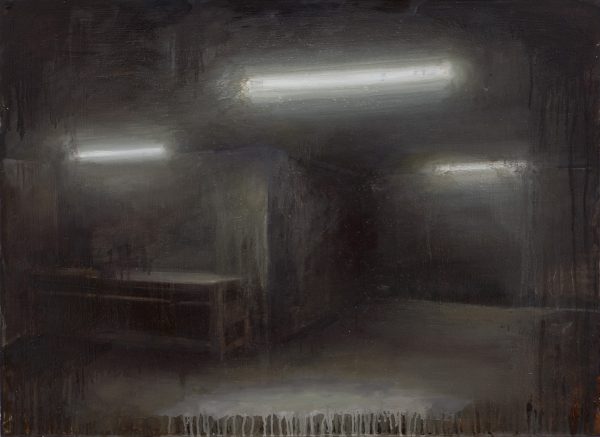 Phosphorum III, 2008Oil on board
Phosphorum III, 2008Oil on board
56×72 cm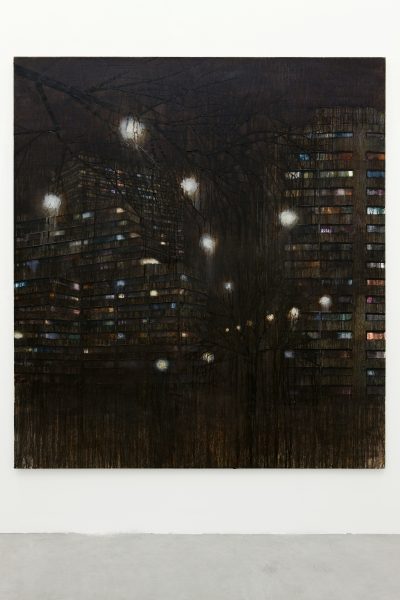 AIN (Kairo Riot), 2011Oil, lacquer, paper on canvas
AIN (Kairo Riot), 2011Oil, lacquer, paper on canvas
210×190 cm
















